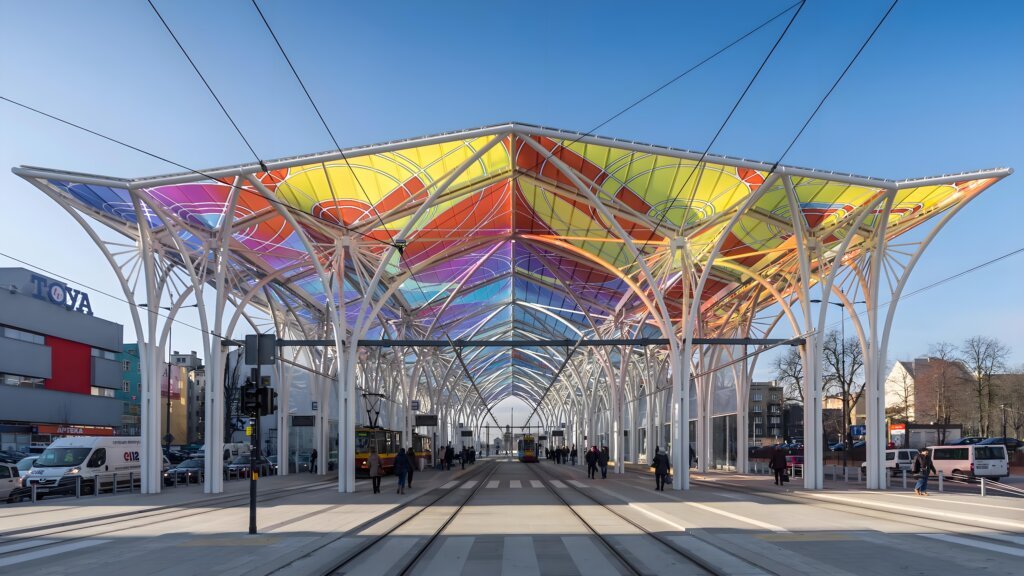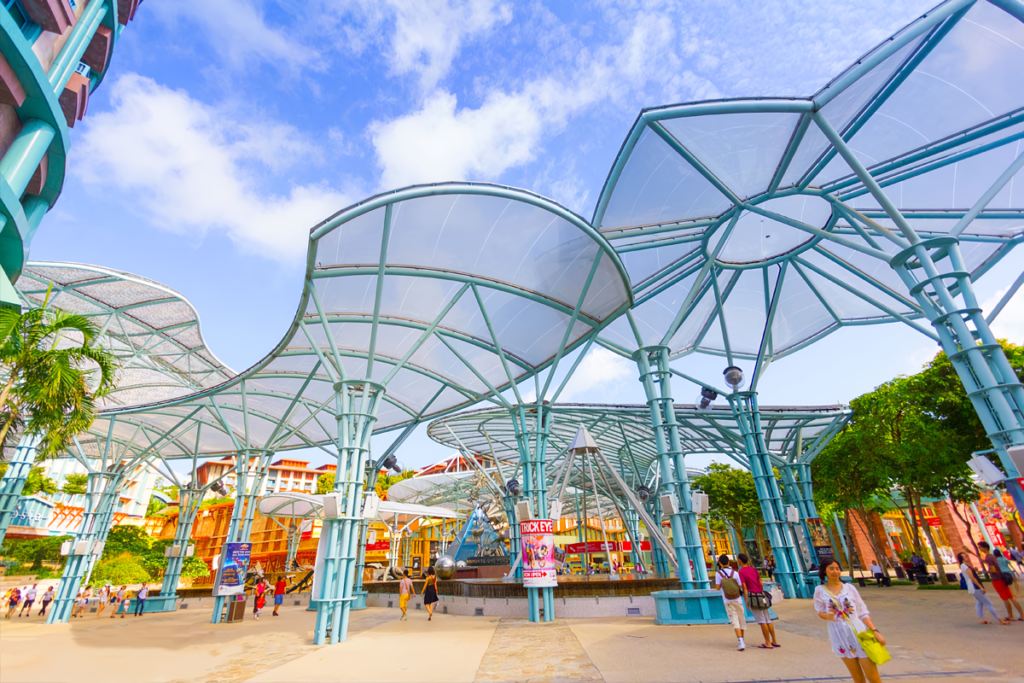
Tensile membrane structures are an innovative architectural form that combines flexible membrane materials with tensile forces to create unique spatial structures. Since the mid-20th century, these structures have gained widespread popularity globally due to their lightness, aesthetic appeal, and versatility. This article provides an overview of tensile membrane structures, including their definition, applications, advantages of materials, and comparisons with traditional buildings.
Definition and Characteristics of Tensile Membrane Structures
Tensile membrane structures utilize the tensile strength of flexible membrane materials, combined with edge supports or tensioned elements, to create a stable, balanced structure. These structures are maintained through applied tension and typically consist of support frameworks (like steel frames or cables) and the membrane covering.

Key characteristics of tensile membrane structures include:
- —Lightweight: Despite being lightweight, tensile membrane structures can cover large spans, making them suitable for large public buildings.
- —Flexibility and Aesthetics: The flexibility of the membrane allows for diverse curved designs, giving the architecture a sense of lightness.
- —Transparency: Some membranes offer excellent light transmission, reducing energy consumption by maximizing natural light during the day.
- —Durability: Membrane materials are resistant to UV rays, aging, and corrosion, enabling long-term use in various climates.
- Applications and Use Cases of Tensile Membrane Structures
- Thanks to their unique properties and aesthetic appeal, tensile membrane structures are used in various types of buildings, including:
- —Sports Venues: Widely used in roofing for stadiums, tennis courts, and swimming pools, tensile membrane structures provide large, column-free spaces with unobstructed views, ideal for sports venues.
- —Commercial and Exhibition Buildings: Malls, exhibition centers, and conference halls benefit from tensile membrane structures’ flexible space and striking designs, enhancing user experience through bright, open environments.
- —Transportation Facilities: Airports, train stations, and bus terminals often use tensile membrane structures for covering waiting areas, parking lots, and walkways, providing comfort in various weather conditions while offering a modern look.
- —Public Spaces and Landscape Architecture: In parks, plazas, and beaches, tensile membrane structures create shelters, walkways, and leisure facilities that add both functionality and artistic value to public spaces.
